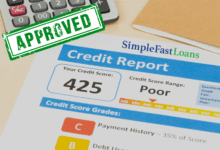Low Interest Personal Loan: Your Guide
Low interest personal loans offer a lifeline for individuals needing financial assistance. Securing a loan with a favorable interest rate can significantly impact your overall borrowing cost, making large purchases or debt consolidation more manageable. This guide explores the intricacies of finding and managing these loans, from understanding eligibility criteria and comparing lender offers to developing effective repayment strategies and mitigating potential risks.
We’ll delve into the factors influencing interest rates, including credit scores, loan amounts, and repayment terms. Learn how to navigate the loan application process, utilizing online tools and resources to find competitive options. We’ll also discuss crucial aspects of financial planning and debt management to ensure responsible borrowing and long-term financial well-being. By the end, you’ll have a comprehensive understanding of low-interest personal loans and be well-equipped to make informed decisions.
Understanding Low Interest Personal Loans
Securing a low-interest personal loan can be a significant financial advantage, allowing borrowers to manage debt more effectively and pursue personal goals without incurring excessive interest charges. Understanding the various loan types, eligibility requirements, and interest rate comparisons is crucial for making informed borrowing decisions. This section provides a comprehensive overview of these key aspects.
Types of Low-Interest Personal Loans
Several types of personal loans offer potentially lower interest rates than others. These rates often depend on the borrower’s creditworthiness and the lender’s specific offerings. Common types include unsecured personal loans (not backed by collateral), secured personal loans (backed by collateral, such as a car or savings account, leading to potentially lower rates), and loans specifically designed for debt consolidation. Credit unions often provide competitive low-interest options to their members. Furthermore, some lenders offer loans tailored to specific purposes, such as home improvement or medical expenses, which may come with preferential interest rates.
Eligibility Criteria for Low-Interest Personal Loans
Eligibility for a low-interest personal loan typically hinges on several key factors. Lenders assess credit scores extensively; a higher credit score generally translates to a lower interest rate. Income stability is another critical factor, demonstrating a consistent ability to repay the loan. The length of employment history and debt-to-income ratio (DTI) are also considered. A lower DTI, indicating a smaller proportion of income dedicated to debt repayment, improves the chances of securing a favorable interest rate. Finally, lenders may review your credit history for any negative marks or late payments.
Comparison of Interest Rates Offered by Various Lenders
Interest rates on personal loans vary significantly across different lenders. Factors such as the lender’s risk assessment, prevailing market interest rates, and the borrower’s credit profile all influence the final interest rate. Banks, credit unions, and online lenders each offer a range of interest rates, often competing for borrowers. Generally, credit unions tend to offer more competitive rates to their members, while online lenders can provide a more streamlined application process but might have varying interest rate structures. It’s crucial to compare offers from multiple lenders to find the most suitable option.
Comparison of Loan Terms, Fees, and APRs
The following table compares loan terms, fees, and Annual Percentage Rates (APRs) from three different hypothetical lenders. Remember that these are examples, and actual rates and fees can vary based on individual circumstances and lender policies. Always check the current rates and terms directly with the lenders.
| Lender | Loan Term (Months) | Fees | APR |
|---|---|---|---|
| Hypothetical Bank A | 36 | $100 origination fee | 7.5% |
| Hypothetical Credit Union B | 48 | $50 origination fee | 6.0% |
| Hypothetical Online Lender C | 24 | No origination fee | 8.0% |
Factors Affecting Interest Rates
Securing a low interest rate on a personal loan is crucial for managing your finances effectively. Several interconnected factors influence the interest rate a lender offers. Understanding these factors empowers you to improve your chances of obtaining favorable terms.
Several key factors significantly impact the interest rate you’ll receive on a personal loan. These factors work together to determine the overall risk the lender perceives in extending credit to you. A higher perceived risk generally translates to a higher interest rate.
Credit Score’s Influence on Interest Rates
Your credit score is arguably the most significant factor determining your personal loan interest rate. Lenders use credit scores to assess your creditworthiness – your history of repaying debts on time. A higher credit score (generally above 700) indicates a lower risk of default, leading to lower interest rates. Conversely, a lower credit score reflects a higher risk, resulting in higher interest rates or even loan denial. For example, a borrower with a credit score of 750 might qualify for a loan with an interest rate of 7%, while a borrower with a score of 600 might face an interest rate of 15% or higher, or even be rejected entirely. Improving your credit score through responsible credit management is a proactive step toward securing a better interest rate.
Loan Amount and Repayment Term’s Impact
The amount you borrow and the length of your repayment term also influence your interest rate. Larger loan amounts often carry higher interest rates because they represent a greater risk to the lender. Similarly, longer repayment terms, while offering smaller monthly payments, generally result in higher overall interest paid and therefore, often come with higher interest rates. This is because the lender is exposed to risk for a longer period. For instance, a $10,000 loan over 3 years might have a lower interest rate than a $10,000 loan over 5 years.
Income Level and Loan Approval
Your income level plays a crucial role in loan approval and the interest rate offered. Lenders assess your debt-to-income ratio (DTI), which compares your monthly debt payments to your gross monthly income. A lower DTI indicates you have more disposable income to manage loan repayments, making you a lower-risk borrower. Individuals with higher incomes generally qualify for lower interest rates because they demonstrate a greater capacity to repay the loan. For example, a high-income earner with a stable job might secure a loan at a lower rate than someone with a lower income and less stable employment. A consistent and verifiable income stream is vital in securing loan approval and favorable interest rates.
Finding the Best Low Interest Loan
Securing a low-interest personal loan requires diligent research and careful comparison of various offers. Understanding the factors that influence interest rates is crucial, but equally important is knowing how to effectively navigate the loan marketplace to find the best deal for your specific financial circumstances. This section provides a step-by-step guide to help you achieve this goal.
Finding the best low-interest personal loan involves a systematic approach that combines online research, careful comparison of offers, and an understanding of your own financial profile. This process can be time-consuming, but the potential savings in interest payments over the loan’s lifetime make it a worthwhile endeavor.
Researching and Comparing Loan Offers
A structured approach to researching and comparing loan offers significantly increases the chances of securing a favorable interest rate. This involves a multi-step process encompassing several key areas.
- Identify your needs: Determine the loan amount you require and the repayment period that aligns with your budget. Consider factors like your credit score, debt-to-income ratio, and overall financial health. For example, a borrower with an excellent credit score and low debt-to-income ratio may qualify for significantly lower interest rates than someone with a poor credit history and high debt.
- Check your credit report: Obtain your credit report from all three major credit bureaus (Equifax, Experian, and TransUnion) to identify any errors that might be impacting your credit score. Addressing any inaccuracies can potentially improve your eligibility for lower interest rates.
- Compare loan offers from multiple lenders: Don’t limit yourself to just one lender. Compare offers from various banks, credit unions, and online lenders. Pay close attention to the Annual Percentage Rate (APR), which includes interest and other fees. A lower APR indicates a better deal. For instance, a loan with a 6% APR is more favorable than one with an 8% APR, even if the interest rate itself seems similar.
- Consider loan terms and fees: Examine the loan’s terms and conditions carefully. Look for hidden fees or prepayment penalties that could affect the overall cost of the loan. Compare loan terms, such as loan duration, repayment schedules, and any associated charges.
- Use online comparison tools: Several websites offer loan comparison tools that allow you to input your desired loan amount and repayment period to see a range of offers from different lenders. These tools can save significant time and effort in the research process. For example, NerdWallet and Bankrate are popular websites that provide such comparison services.
Essential Factors to Consider Before Applying
Before submitting a loan application, it is crucial to review a checklist of essential factors to ensure you are making an informed decision and securing the most favorable terms possible.
- Interest rate: The interest rate is the most important factor. A lower interest rate will result in lower overall loan costs.
- Fees: Be aware of all associated fees, including origination fees, application fees, and prepayment penalties.
- Loan term: A shorter loan term will result in higher monthly payments but lower overall interest costs. A longer term will result in lower monthly payments but higher overall interest costs.
- Repayment schedule: Understand the repayment schedule and ensure you can comfortably afford the monthly payments.
- Credit score impact: Consider how taking out a loan might affect your credit score. Applying for multiple loans in a short period can negatively impact your score.
Utilizing Online Tools and Resources
The internet provides a wealth of resources to help you find competitive loan options. Effective use of these tools can streamline the process and improve your chances of securing a favorable loan.
Many reputable financial websites offer loan calculators and comparison tools. These tools allow you to input your financial information and compare different loan offers side-by-side. This enables a clear understanding of the total cost of each loan, including interest and fees, allowing for a more informed decision. Furthermore, reading online reviews and ratings of lenders can provide valuable insights into their customer service and reputation.
Managing Your Low Interest Personal Loan
Securing a low-interest personal loan is a significant step towards achieving your financial goals, but responsible management is crucial to maximize its benefits and avoid potential pitfalls. Careful planning and proactive strategies are key to ensuring a smooth repayment process and maintaining a healthy financial standing.
Before taking out any loan, including a low-interest one, thorough budgeting and financial planning are essential. This involves understanding your current income and expenses, identifying areas where you can reduce spending, and creating a realistic budget that accommodates the loan repayment. Failing to do so can lead to missed payments, penalties, and damage to your credit score.
Budgeting and Financial Planning Before Loan Acquisition
Creating a comprehensive budget requires a detailed assessment of your monthly income and expenses. Categorize your spending (housing, transportation, food, entertainment, etc.) to identify areas where you can cut back. Use budgeting apps or spreadsheets to track your spending and create a realistic projection of your future cash flow. This detailed picture will help determine the maximum loan amount you can comfortably afford without jeopardizing your financial stability. For example, if your monthly income is $4,000 and your expenses are $3,000, you have $1,000 available for loan repayment and other savings goals. A realistic loan payment plan should fall comfortably within this $1,000, leaving enough for emergencies and other financial obligations.
Strategies for Timely Loan Repayment
Timely loan repayment is paramount for avoiding late payment fees and maintaining a positive credit history. Setting up automatic payments directly from your checking account can eliminate the risk of forgetting a payment. Alternatively, setting reminders on your calendar or using budgeting apps with payment tracking features can serve as effective reminders. Consider overpaying your loan whenever possible to reduce the principal amount and shorten the loan term, saving on interest in the long run. For instance, if your monthly payment is $200, try paying $250 or even $300 when feasible. This extra payment will directly reduce the principal and accelerate your debt-free journey.
Effective Debt Management and Avoidance of Future Financial Difficulties
Effective debt management involves a multi-pronged approach. Prioritize high-interest debts first, paying them down aggressively while making minimum payments on lower-interest loans. Regularly review your budget and spending habits to identify opportunities for savings. Building an emergency fund, typically equivalent to 3-6 months of living expenses, is crucial for unexpected events that could otherwise disrupt your repayment plan. For example, having a $6,000 emergency fund (for a $1,000 monthly expense budget) can prevent a sudden job loss from derailing your loan repayment. Furthermore, avoid taking on additional debt until existing loans are paid off to prevent an overwhelming debt burden.
Creating a Repayment Schedule and Tracking Loan Payments
A well-structured repayment schedule is crucial for effective loan management. This schedule should outline the loan amount, interest rate, monthly payment, and the total number of payments. Track each payment meticulously, noting the payment date, amount paid, and the remaining balance. You can create a simple spreadsheet or use a loan amortization calculator to track progress and visualize the reduction of your loan balance over time. For instance, a simple spreadsheet could include columns for payment number, payment date, payment amount, interest paid, principal paid, and remaining balance. Regularly reviewing this spreadsheet helps you stay on track and identify any potential issues early on.
Potential Risks and Alternatives
Securing a low-interest personal loan can be a beneficial financial tool, but it’s crucial to understand the potential drawbacks and explore alternative options before committing. Failing to do so could lead to unforeseen financial difficulties. This section will outline the inherent risks associated with personal loans and discuss viable alternatives.
While low interest rates offer significant advantages, overlooking the potential pitfalls can negate these benefits. Borrowing responsibly requires a thorough understanding of the entire financial landscape, including the implications of default and the availability of alternative financing methods.
High Debt Levels and Financial Strain
Taking on a personal loan, even at a low interest rate, increases your overall debt. This can lead to financial strain if not managed carefully. Overextending oneself financially by taking on multiple loans simultaneously or exceeding one’s repayment capacity can result in missed payments and negatively impact credit scores. For example, a person with several credit cards nearing their limits, taking on a substantial personal loan, could quickly find themselves struggling to make minimum payments across all debts. This situation necessitates a detailed budget analysis to assess affordability before applying for any loan.
Alternative Financing Options
Before applying for a personal loan, explore alternative financing options. Borrowing from family or friends, while potentially less formal, can often offer more flexible repayment terms and lower interest rates, or even no interest at all, based on personal relationships. However, it’s vital to establish clear agreements in writing to avoid misunderstandings and potential damage to personal relationships. Other alternatives might include utilizing savings, selling assets, or exploring options like 0% APR credit cards for specific purchases, although these often come with caveats and limitations.
Consequences of Defaulting on a Personal Loan
Defaulting on a personal loan has serious consequences. Late payments and missed payments negatively impact your credit score, making it harder to obtain credit in the future, whether for a mortgage, car loan, or even a new credit card. Lenders may also pursue legal action, potentially leading to wage garnishment or the seizure of assets. Furthermore, the debt may be sold to a collections agency, resulting in additional fees and further damage to your credit history. The severity of the consequences varies depending on the loan amount and the lender’s policies, but the potential impact is substantial.
Personal Loans Versus Other Borrowing Options
Personal loans offer the advantage of a fixed interest rate and repayment schedule, providing predictability in budgeting. However, they often require a good credit score to qualify for favorable interest rates. Alternative options like borrowing from family or friends might offer more flexibility but lack the formal structure and protections of a personal loan. Credit cards, while convenient, typically carry higher interest rates than personal loans and can lead to accumulating debt quickly if not used responsibly. Choosing the right option depends on individual circumstances, financial health, and the specific needs of the borrower. A careful comparison of interest rates, fees, and repayment terms is essential before making a decision.
Illustrative Examples
Understanding the practical implications of low-interest personal loans requires examining both successful and unsuccessful scenarios. The following examples illustrate the potential benefits of responsible borrowing and the serious consequences of loan default.
Successful Loan Management Scenario
Sarah, a teacher, needed a new laptop for her work. She researched and found a low-interest personal loan with a 4% APR over 36 months. Her monthly payment was calculated to be $100, a manageable amount within her budget. Sarah meticulously tracked her loan payments, ensuring on-time payments each month. She successfully repaid the loan within the agreed timeframe, building positive credit history and avoiding any penalties. This responsible financial behavior improved her credit score, opening opportunities for future loans and other financial products with more favorable terms. The new laptop significantly improved her work efficiency and contributed to her overall professional success.
Consequences of Loan Default
In contrast, consider Mark, who took out a personal loan to consolidate high-interest credit card debt. While initially manageable, unexpected job loss resulted in his inability to make timely loan payments. He missed several payments, leading to late fees, increased interest charges, and a significant decline in his credit score. His credit report now reflects the delinquency, making it difficult to secure future loans, rent an apartment, or even obtain a mobile phone contract. The financial strain from the defaulted loan, coupled with the unemployment, significantly impacted his financial well-being and overall quality of life. He faced difficulty securing new employment due to his damaged credit history, creating a vicious cycle of financial hardship.
Hypothetical Low-Interest Loan Offer
Let’s examine a hypothetical low-interest personal loan offer from “Example Bank.” The loan amount is $5,000, with a fixed Annual Percentage Rate (APR) of 6%. The loan term is 24 months, resulting in a monthly payment of approximately $221. The offer includes no prepayment penalties, allowing early repayment without additional fees. The loan requires a credit check, and approval is subject to the applicant’s creditworthiness and financial stability. The total interest paid over the loan term would be approximately $664. The loan agreement clearly outlines all fees, including late payment fees ($25 per incident), and details the repayment schedule. The bank provides a clear and concise disclosure of all terms and conditions, ensuring transparency for the borrower. Example Bank also offers various repayment options, including online banking, automatic payments, and phone payments, providing flexibility for the borrower.
Last Word
Successfully securing and managing a low-interest personal loan requires careful planning, research, and responsible financial behavior. By understanding the factors that influence interest rates, diligently comparing loan offers, and adhering to a well-defined repayment plan, you can significantly reduce your borrowing costs and achieve your financial goals. Remember, proactive financial management is key to avoiding potential pitfalls and maintaining a healthy credit profile. This guide serves as a starting point; further research and consultation with financial professionals can enhance your understanding and decision-making process.





